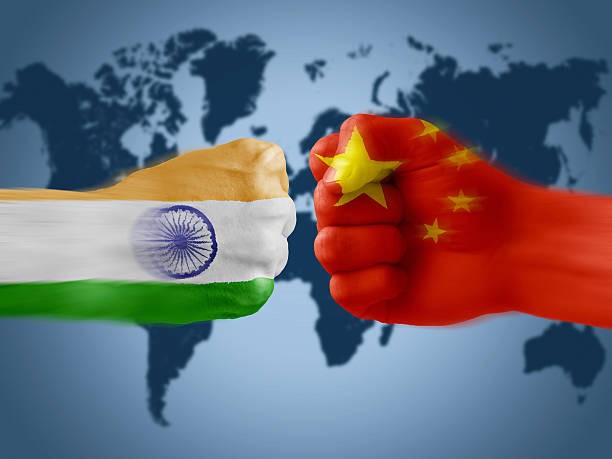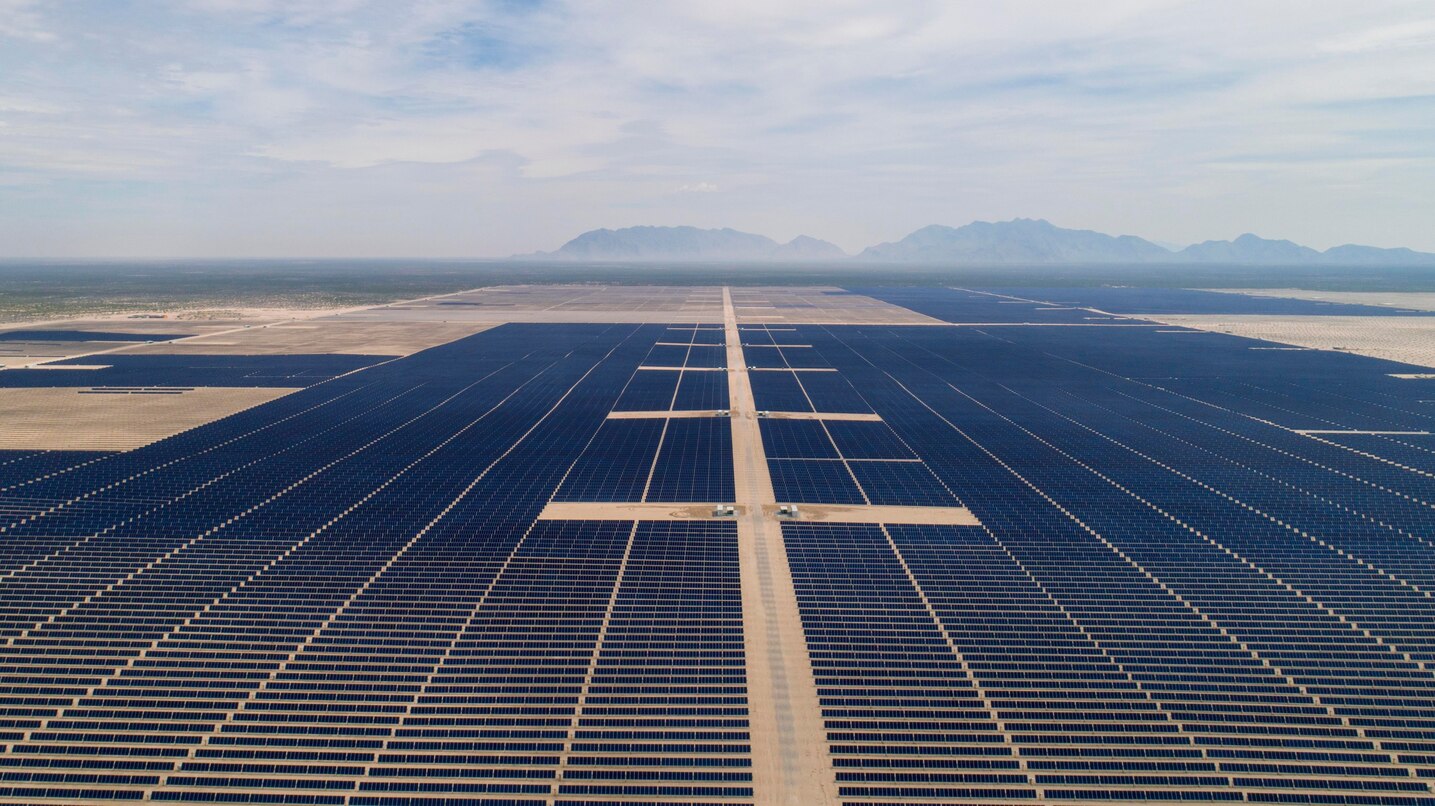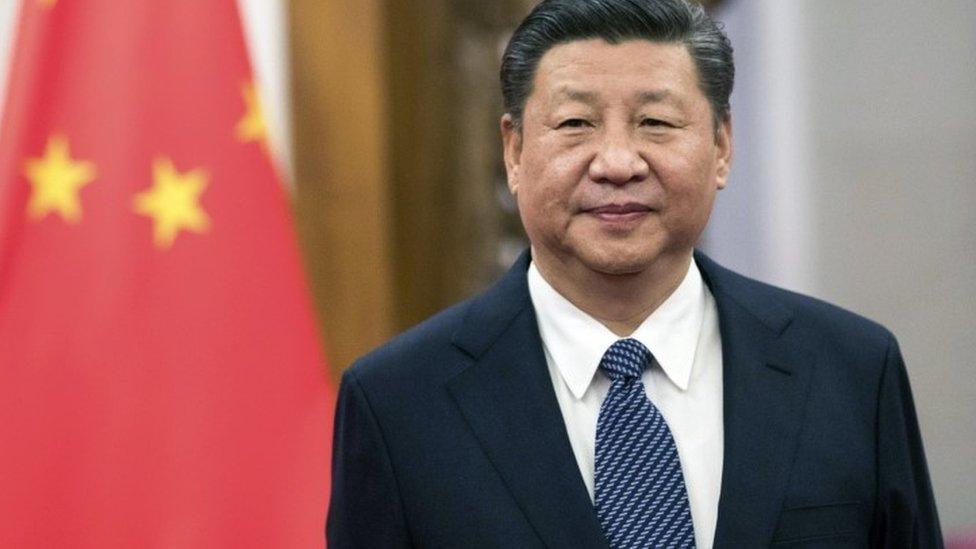- Courses
- GS Full Course 1 Year
- GS Full Course 2 Year
- GS Full Course 3 Year
- GS Full Course Till Selection
- Answer Alpha: Mains 2025 Mentorship
- MEP (Mains Enrichment Programme) Data, Facts
- Essay Target – 150+ Marks
- Online Program
- GS Recorded Course
- Polity
- Geography
- Economy
- Ancient, Medieval and Art & Culture AMAC
- Modern India, Post Independence & World History
- Environment
- Governance
- Science & Technology
- International Relations and Internal Security
- Disaster Management
- Ethics
- NCERT Current Affairs
- Indian Society and Social Issue
- NCERT- Science and Technology
- NCERT - Geography
- NCERT - Ancient History
- NCERT- World History
- NCERT Modern History
- CSAT
- 5 LAYERED ARJUNA Mentorship
- Public Administration Optional
- ABOUT US
- OUR TOPPERS
- TEST SERIES
- FREE STUDY MATERIAL
- VIDEOS
- CONTACT US
INDIA-CHINA RELATIONS
INDIA-CHINA RELATIONS

INDIA-CHINA RELATIONS
THE STORY OF CHINA
- 1930s: Chinese Japanese war. INC sent Dr. Atal mission to China to treat the injured Chinese soldiers. Dr. Kotnis was part of that mission who sacrificed his life while serving the Chinese soldiers. He is revered in China till date.
- 1940s: The Communist Army (later established People's Republic of China or PRC) and the Republican army (Later established Republic of China or RoC or Taiwan) started consolidating power in China to end the ongoing civil war there. The Communist army was able to consolidate more power and was more spread out as compared to Republican army.
- 1949: PRC was established & RoC was shifted to Barmosa island. (RoC was the representative of China in the UN till 1972.) India became the first non-communist country to recognise PRC.
POST INDEPENDENCE
- On 1 April, 1950, India became the first non-socialist bloc country to establish diplomatic relations with the People’s Republic of China. Prime Minister Nehru visited China in October 1954.
- 1954: Both nations signed Panchsheel which includes- Mutual respect for each other's territorial integrity and sovereignty, Mutual non-aggression, Mutual non-interference in each other's internal affairs, Equality and mutual benefit, Peaceful co-existence.
- 1959: Political asylum given to Dalai Lama. Ongoing conflict between India and China in the Aksai Chin region and Arunachal Pradesh. (PRC called it South Tibet). Project DANTAK was also going on in Bhutan.
- 1962: Indo China War. China won the war. Diplomatic relations were terminated after the war.
- 1978: Janta party govt came to power (1977) and restored relations with China. AB Vajpayee became the first foreign minister to visit China.
ERA OF COOPERATION
- 1988: Rajiv Gandhi visited China. Agreements were signed on S&T development, establishing direct air links and a JWG on boundary issues.
- 1993: PV Narasimha Rao signed an agreement on Peace and Tranquility. (Cross border trade, cultural cooperation & cooperation on environmental issues, etc)
- 1995: Taipei Economic & Cultural center opens in New Delhi and India Taipei Association in Taiwan.
- 1998: India conducted nuclear test and relationship hit a new low as China was India's biggest opponent for its nuclear arsenal.
- 2003: AB Vajpayee's visit to China where India recognised sovereignty of China over Tibet and China recognised India's sovereignty over Sikkim.
- 2005: China gets observer status at SAARC.
- 2007: Stapled Visa issue: China denied application of visa for Arunachal Pradesh IAS officer citing the reason that Arunachal is in South Tibet hence part of China. However, in 2008, it got reversed as Marpe Sora, a professor from Arunachal was granted a visa. In 2011, it again surfaced, when two athletes were given stapled visa.
PM MODI’s PERIOD
- 2014: BRICS New Development Bank (NDB) and Contingency Reserve Arrangement (CRA) was formed. Xi Jinping was invited to the swearing in ceremony of Modi. The two sides redefined the bilateral engagement as Closer Developmental Partnership.
- 2015: PM Modi visited. During the visit, Prime Minister Modi and Premier Li Keqiang also addressed the opening session of the First State/Provincial Leaders’ Forum in Beijing. 24 agreements were signed on the government-to-government side, 26 MoUs on the business-to business side and two joint statements, including one on climate change. Prime Minister also announced e-visa facility for Chinese tourists.
- 2017: Doklam Issue.
- 2018: Prime Minister Modi and President Xi held the first Informal Summit in Wuhan to exchange views on overarching issues of bilateral and global importance and elaborated upon their respective visions and priorities for national development. The two leaders agreed to significantly enhance efforts to build on the convergences through the established mechanisms in order to create the broadest possible platform for the relationship.
- 2019:
- The bilateral ties continued to strengthen and deepen with the Second Informal Summit between Prime Minister Modi and President Xi held in Chennai (Mamallapuram). The Second Informal Summit evaluated the direction of bilateral relationship in a positive light and discussed ways to further deepen India-China bilateral interaction to reflect the growing role of both countries on the global stage. The Summit recognized that India and China were factors for stability in the current international landscape and that both sides should properly manage their differences and not allow them to become disputes.
- India cannot join the BRI of China. India claims that it ignores territorial integrity of India as it passes through the PoK.
- 2020: Chinese and Indian troops clashed at Nathu La. Tensions grew in the Galwan valley in Ladakh area. Issue: India's construction of a road from Darbuk to Daulat Beg Oldi via Shyok. India retaliated by banning Chinese apps in India.
- 2022: INDIA CHINA TROOPS DISENGAGEMENT
- Indian and Chinese troops kicked off disengagement from Patrolling Point-15 (PP 15) in the larger Gogra-Hot Springs area of eastern Ladakh.
- The move comes ahead of the Shanghai Cooperation Organisation (SCO) summit in Uzbekistan next week, in which Prime Minister Narendra Modi and Chinese President Xi Jinping are expected to participate.
- On September 08, 2022, according to the consensus reached in the 16th round of India China Corps Commander Level Meeting, the Indian and Chinese troops in the area of Gogra-Hot Springs (PP-15) have begun to disengage in a coordinated and planned way.
Multilateral Cooperation between India and China
- BRICS: BRICS is a formal grouping of five countries namely Brazil, Russia, India, China and South Africa. The very acronym was coined by the Goldman Sachs economist Jim O’Neill in early 2000s to fantasize the idea of emerging countries which would shape the world economy in the new millennium.
- Shanghai Cooperation Organisation (SCO): India along with Pakistan became a member of the SCO in 2017. With its members now accounting for the majority of the world’s territory and population and offering huge potential for development, the entry of India and Pakistan is likely to help the SCO “expand its influence in international and regional affairs in various fields, especially in security, geopolitics and the economy”.
- Asian Infrastructure Investment Bank (AIIB): AIIB headquartered at Beijing is a new multilateral development bank founded to bring countries together to address the daunting infrastructure needs across Asia.
- BASIC: BASIC countries comprising Brazil, South Africa, India and China reiterated solidarity on Environmental issues in Copenhagen summit in 2009 to uphold the principle of climate justice for developing countries against high per capita carbon footprint of developed world.
Significance of India China relations
- Economic Significance:
- In 2021-22, India’s trade with China stood at $115.83 billion, driven by demand for electronic products, chemicals and auto components. India’s imports accounted for a bulk of the trade, reaching $95.5 billion, while exports crossed $20 billion for the first time.
- FDI stood at 279.46 million USD in 2021-22.
- Dependency on China in Active Pharmaceutical Ingredients (API), semiconductors, telecom networks, etc.
- Defence:
- Relations re-established in 1992 after Defence minister Sharad Pawar visited.
- In 2007, Hand in Hand exercise started between the two countries.
- Culture:
- In 2011, China India exchange year was celebrated.
- In 2012, Year of China India Friendship and cooperation.
- In 2015, Nathu La pass opened for pilgrimage. It was also celebrated as the India Tourism year in China. (Visit India Year)
- In 2016 Visit China Year was celebrated in India.
- In 2020, China India year of Cultural & People to People exchange was celebrated.
- The two countries have established pairs of sister cities and provinces. For example, sister provinces and cities between Fujian Province & Tamil Nadu State, Quanzhou City & Chennai City.
Challenges:
- Border issues: In a remote Himalayan valley in mid-June 2020, Chinese and Indian troops faced each other armed only with sticks and rocks. By the end of the battle in the Galwan Valley, at least 20 Indian soldiers had been killed and 76 had been injured. Recently, Indian and Chinese soldiers were involved in the Tawang Standoff leading to injuries to both the sides.
- Pakistan China axis: engagement leading to apprehension of a two-front war and national security challenges for india.
- Trade imbalance – A trade deficit of $70 billion USD with China is a cause for concern for India because it signifies an inability to compete with Chinese manufactured goods. China’s protectionist policies – hinder the ability of Indian companies to enter Chinese markets.
- The Brahmaputra, also known as the Yarlung Tsangpo in Tibet, the Siang/Dihang River in Arunachal Pradesh, and Luit, Dilao in Assam, originates in the Manasarovar Lake region, near the Mount Kailash, flows through South Tibet, India, and Bangladesh. It enters India west of Sadiya town in Arunachal Pradesh.
- Hinderance for India's positive engagement at multilateral foras such as Nuclear Suppliers group, UNSC. Nuclear Suppliers Group – China has been blocking India’s attempt to entry to NSG to build a case for Pakistan.
- Digital Security – The abrupt increase in Chinese investment in the Knowledge economy of India, that mostly involves the tech-start-ups, has raised the concerns related to privacy and data issues. Chinese company Huawei has been boycotted by many countries including the USA citing privacy issues. India still lacks any strong framework that can address such security issues. The probe into the cyberattack on some servers at AIIMS in Delhi has found that the IP addresses of two emails, originated from Hong Kong and China’s Henan province.
One Belt One Road/Belt and Road Initiative:
The OBOR initiative was announced in 2013 by China’s President Xi Jinping.
The ‘Belt’ refers to the ‘Silk Road Economic Belt’, which is a series of overland routes reminiscent of the Silk Road of antiquity and the late Middle Ages, while the ‘Road’ refers to the sea routes, which is also referred to as the 21st Century Maritime Silk Road.
The objectives of the OBOR:
- Creation of a unified large market that makes use of both international and domestic markets.
- Facilitate cultural exchange and integration
- Enhance mutual understanding and trust of member nations that will foster an innovative environment with capital inflows, talent pool and technology database.
Concerns related to BRI:
- Poor track record of Chinese construction companies which are known for sub standard construction & mistreatment of local workers.
- Countries like Russia believe that BRI will reduce its sphere of influence in the CAR at the cost of increasing China’s influence.
- The risk of falling into a ‘debt trap’. Sri Lanka is believed to have fallen in this trap.
- Credit imperialism. China is charging exorbitant rate of interests for critical projects.
String of Pearls
- String of pearls, in geo-strategic parlance, refers to Chinese military and commercial facilities and relationships, in and around the Strait of Malacca, Sri Lanka (Hambantota port), Pakistan (Gwadar port), the Maldives, the Strait of Hormuz and Somalia. It also includes Bangladesh (Chittagong) and Myanmar (Sittwe port) in Chinese strategy.
Way forward
- Trust deficit is a critical issue in Sino-Indian bilateral relations. In order to solve this problem, track II diplomacy can play a more active role. For e.g. BCIM (Bangladesh–China–India–Myanmar) economic corridor is an outcome of track II dialogue.
- There is need to increase the frequency of talks at highest levels multilateral meets such as East Asia Summit (EAS), the Shanghai Cooperation Organisation (SCO), Conference on Interaction and Confidence-Building Measures in Asia (CICA), BRICS and G-20.
- India and China should seek an early settlement of the border issue, before the final settlement of the boundary question is reached we should jointly maintain peace and tranquillity in the border areas.
EAM S. Jaishankar’s Suggestion to deal with China
“Three Mutuals” and “Eight Broad Propositions” were suggested by Mr. S Jaishankar to manage the relationship with China.
The 3 mutuals
- Mutual Sensitivity and Mutual Respect for each other’s concerns. Also, Mutual Interests of the both to cooperate and help for India-China relations to grow.
The 8 Major propositions
- A relation of Reciprocity: While each state had its interests, concerns and priorities, sensitivities to them could not be one-sided and relations were reciprocal in nature. As rising powers, neither should ignore the other’s set of aspirations.
- Adhering to commitments made: The first proposition was that agreements already reached must be adhered to in their entirety, both in letter and in spirit.
- Maintaining peace and tranquillity: Peace and tranquillity in border areas were the basis for the development of the relationship in other domains. If that was disturbed, he said, the rest of the relationship would be too.
- Divergences management: While both sides had made a common cause on development and economic issues and common membership of plurilateral groups was a meeting point, there were divergences when it came to interests and aspirations.
- Civilizational ties: The last proposition was that as civilizational states, India and China must always take the long view.
- Cooperation and competition: Even before the events of 2020, the relationship had reflected a duality of cooperation and competition.
- Respect for LAC: Both sides also needed to strictly observe and respect the LAC, and any attempt to unilaterally change the status quo was completely unacceptable.
- Broader partnership: The fourth proposition was that while both remain committed to a multipolar world, they should recognize that a multipolar Asia was one of its essential constituents.
Conclusion
China and India must transcend the bilateral dimension of their ties for stability in Asia and the world. Enhancing confidence-building measures and an early settlement of the boundary issue is vital for the two nations.
So, they must rise to the occasion for betterment of world in general and developing world in particular which they themselves comprise maximally.



